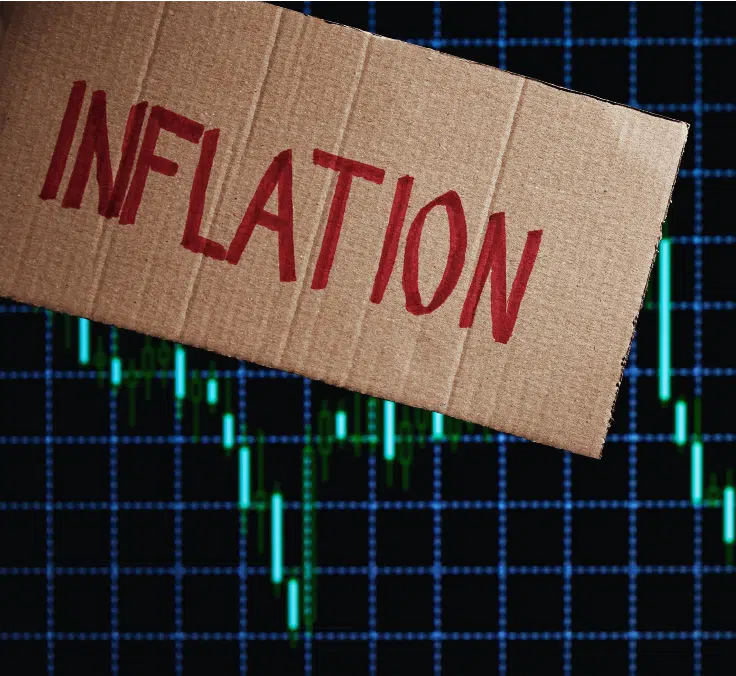ECONOMY| 22.02.2023
Insurance, much more valuable in periods of high inflation
The inflation that has been occurring since late 2021 was triggered by, among other factors, pandemic monetary and fiscal stimulus policies, and it was revitalized by the energy crisis stemming from the invasion of Ukraine, catching governments, businesses, and consumers by surprise.
Despite the orthodox measures central banks have taken to increase interest rates, inflation has stayed strong. Because along with these economic factors, other more structural elements have become relevant, such as the energy transition, which requires high levels of investment; de-globalization, which has been accelerated by the conflict in Ukraine; and demographic changes, given that an aging population also requires more healthcare resources.
For insurance companies, this inflationary shock presents both opportunities and threats. On the one hand, one advantage is that the value of current insurance products grows in economic landscapes like that of today for consumers, and by extension, for society. This is reflected in the report “The return of inflation: what it means for insurance,” prepared by The Geneva Association, with the participation of MAPFRE Economics.
Insurance provides greater financial flexibility to customers who have seen their buying power cut and acts to mitigate social inequality. The role of insurance in preventing personal, home, and business losses gains importance in this context of inflation, as does financial intermediation, which helps transform the long-term savings effect with higher returns.
By type of business, from a technical and financial point of view, the non-life insurance line of business (property, accident, and health) is adversely affected in environments like this, mainly due to the rise in operating and claims costs, the need to increase reserves, and, in the case of stagflation, the drop in demand.
“Implementing restrictive monetary policies has a negative effect on economic growth, which impacts demand in this line of business, as it’s more linked to the economic cycle. In addition, both operating and claims costs are rising,” explained Manuel Aguilera, general manager of MAPFRE Economics, presenting the report in a webinar held on February 9, with the participation of Li Xing, head of market analysis at Swiss Re Institute; Rachel Turk, group head of strategy at Beazley; and Kai-Uwe Schanz, deputy managing director and head of research and foresight at the Geneva Association.
The effect on the life insurance business, for its part, is more neutral, since in most cases the profits it provides are nominally fixed. The sales of these products may be impacted indirectly, however, since that fixed amount loses value in a context of inflation, and that can make insurance a less attractive instrument for channeling savings.
“Life insurance profits are established in nominal terms, so inflation reduces its value in real terms”, Aguilera noted, indicating that this may even frustrate consumers of life insurance products and occasionally increase the industry’s reputational risks.
In addition, the interest rate hikes imposed by the central banks to control rising prices can have a positive impact on the insurance business, with a favorable effect on future debt obligations, as the report indicates. Furthermore, the savings-linked products of life insurance that offer a higher return and inflation-protection features become more attractive.
“After this inflationary shock it’s expected that monetary policy will normalize and interest rates will be positive at the very least. This will lead to change for life insurance companies in developed markets, which have been in an unusual situation in recent years, as interest rates have been near zero,” Aguilera commented.
How do insurance companies act?
According to the report, the first response of insurance companies is often to reprice insurable risks given the higher claims costs. Thus, controlling their inflation and investing in claims automation and in partnerships with other companies could help insurance companies facing the current context.
At the product design level, they could make progress on innovating and offering less expensive products focused on risk and loss prevention, as well as shortening the duration in “long-tail” business where the effects of inflation may be stronger and more far reaching. Likewise, digitalization remains key in these types of environments, with the objective of improving cost efficiency and employee productivity in areas like distribution, marketing, and customer service.
The general manager of MAPFRE Economics emphasized that inflation will not go away “forever,” but will be recurring like any other economic phenomenon, reappearing as it has done at other moments in history. For this reason, the insurance industry should try to learn from the lessons of the current inflation crisis and take them into account when designing future products.
Asset management
In relation to the asset management business, the report determines that there is scope for inflation protection through tactical asset allocation, by moving away from financial assets towards other real assets, where price increases may also translate into greater demand for savings-linked insurance.
The report proposes focusing the portfolio more on assets like inflation-linked bonds or the real estate sector, among others, which offer greater coverage for this phenomenon.
“In these types of environments it is important to control the level of risk of each of the investments. I believe the key to future success is to find neutrality in the different asset classes, through the structure of the balance sheet and the risk portfolio of each insurance company,” Aguilera concluded.
RELATED ARTICLES:



